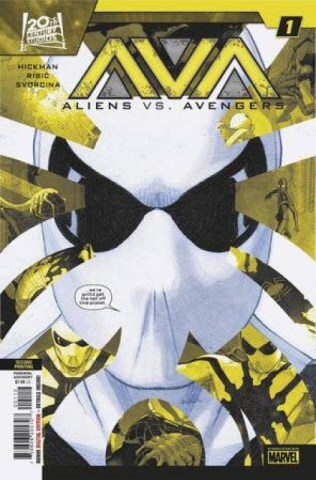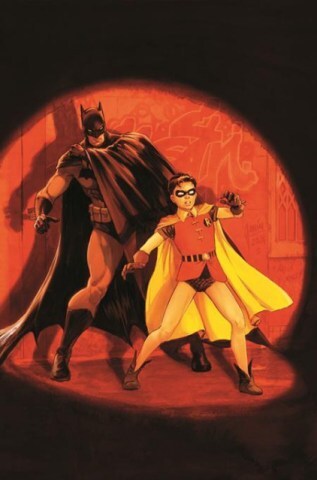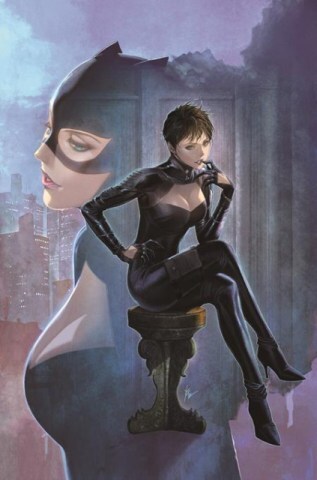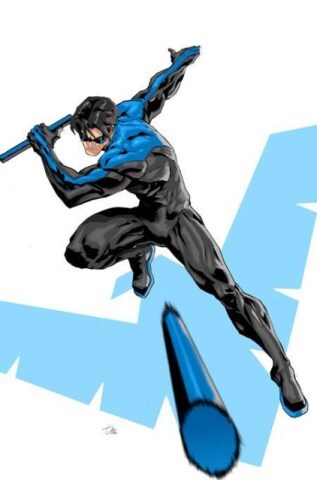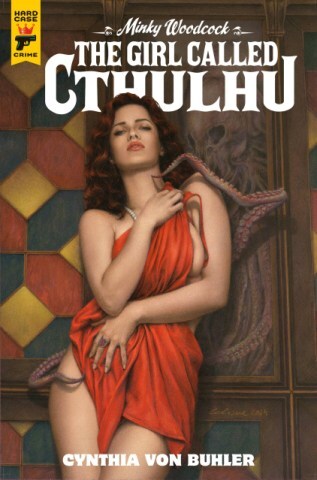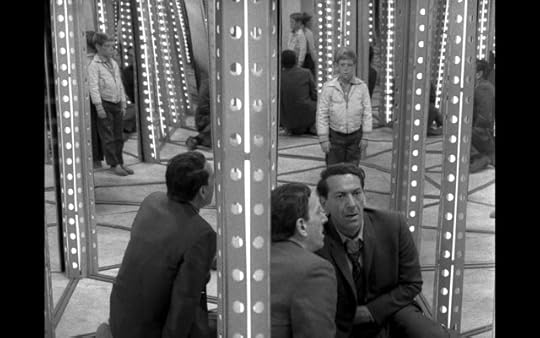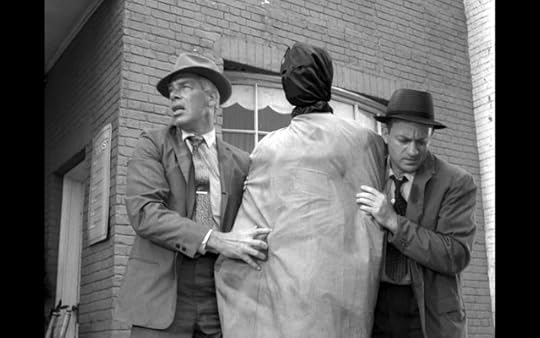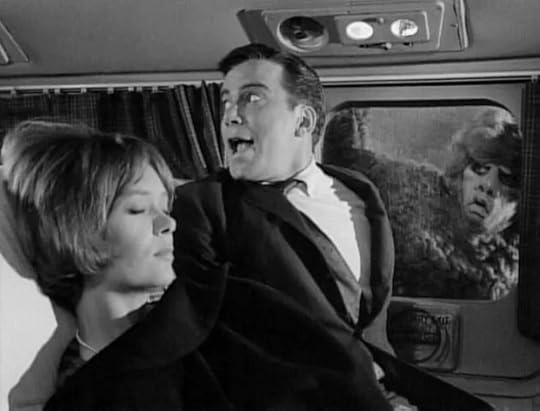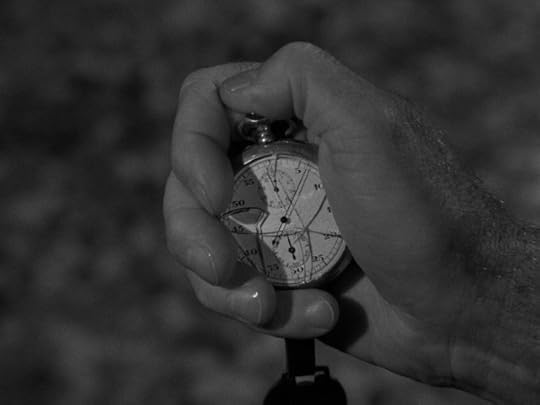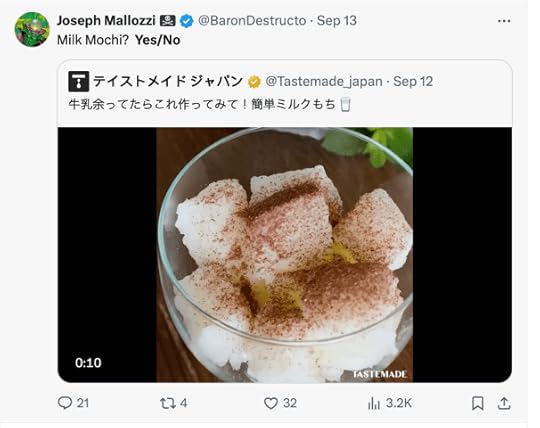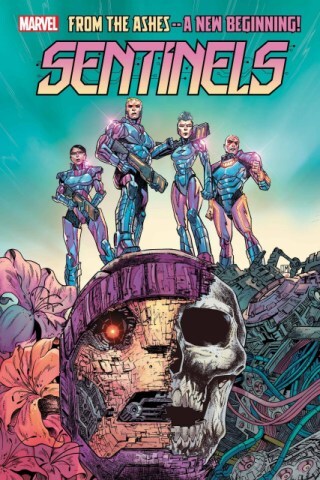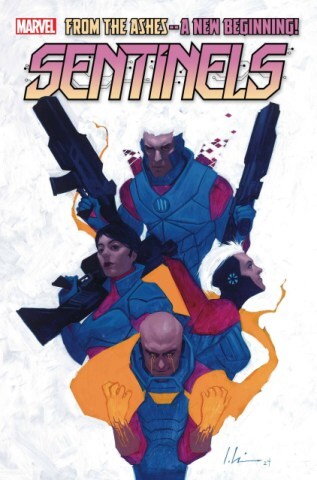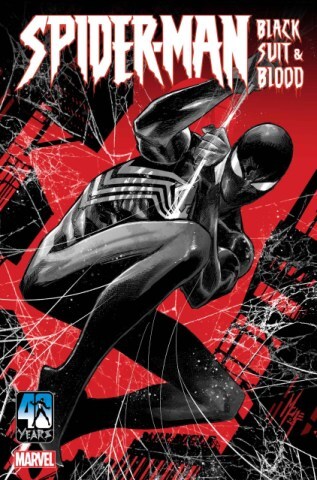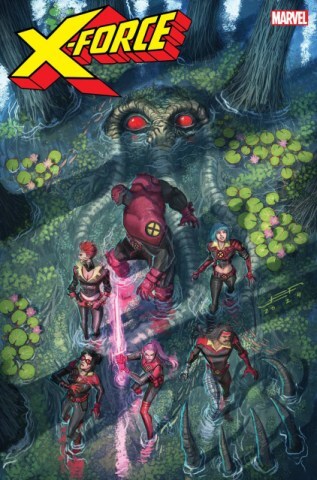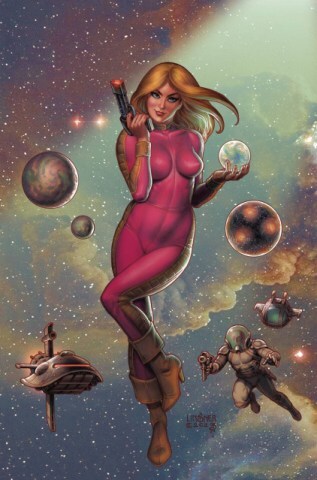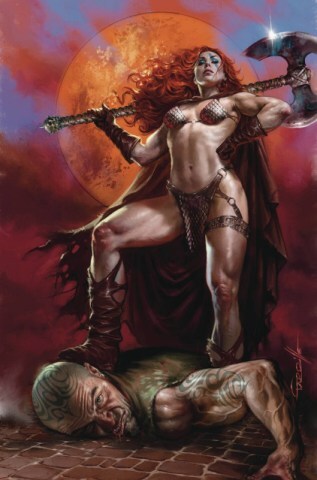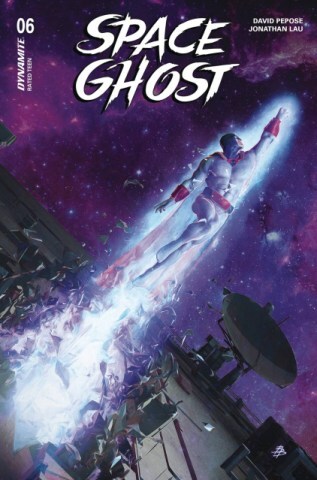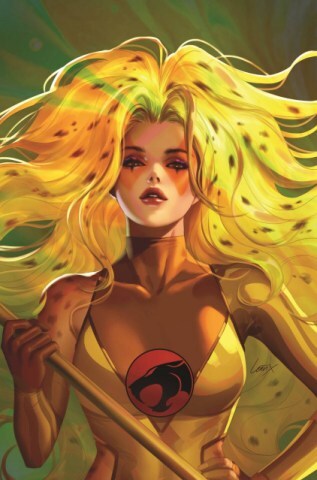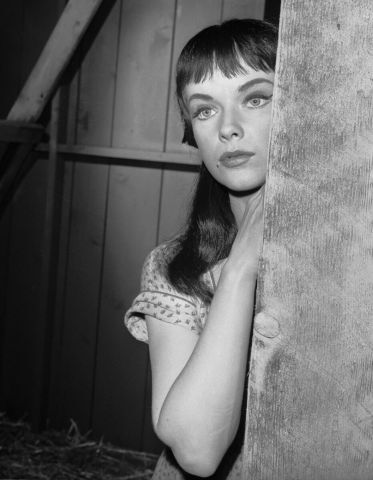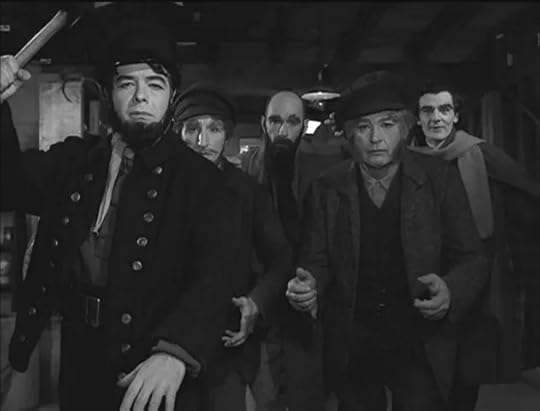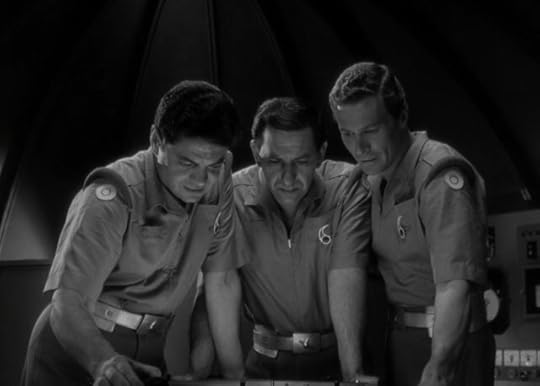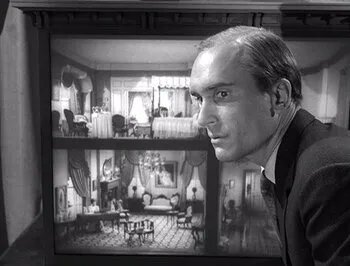Joseph Mallozzi's Blog, page 39
October 17, 2024
October 17, 2024: The Post-Birthday Update!
Yesterday, I celebrated my birthday in gloriously unremarkable fashion. I slept in, we took Sharky for a walk, I watched a Twilight Zone and wrote up a related post, and then I made a hot sauce using cayenne peppers from my sister’s garden…
It’s a variation on an old Jamie Oliver recipe, but I didn’t have my usual ingredients, so I mixed and matched. In the past, I’ve made this with habaneros, but this time out I went with the far milder cayennes…which Akemi appreciated.
50 cayenne peppers, three shallots (instead of the usual two sweet onions) and some diced garlic. A generous sprinkle of salt and a quick blitz.
Olive oil in the pan and then simmer on medium for about ten minutes. Once it gets going and starts to reduce, I add a couple of tablespoons of brown sugar and a spoonful of Korean chili powder.
No red tomatoes and apples, so I went with cherry tomatoes from my sister’s garden and these two pears I rescued from the complimentary fruit basket in the hotel gym. These get blitzed and mixed in with the rest…
I add 150 milliliters of apple cider vinegar and…well, the recipe calls for a cup of apple juice but I didn’t have it, so I went with a couple of tablespoons of farmer’s market apple jam…
Then simmer on low for another 20 minutes.
Once it’s had time to cool a little, it all goes back into the blender for another extreme blitz.
Because I used jam instead of apple juice, the consistency was thicker than usual – which I don’t mind as I much prefer a hot sauce with substance over the runny ones. I had the option of running it all through a sieve but, again, I like the consistency – and the chili seeds.
And voila. Pretty delicious, especially with the whole roast chicken Akemi made for lunch. I couldn’t stop eating it. And then paid the price late last night. But we al have to make sacrifices I guess.
For the man who has everything: a laptop stand, vitamin D, and two bottles of more hot sauce!
This morning, my sister texted to tell me my mother actually walked the length of the hospital hall today. A HUGE feat given that, for weeks, she’s barely been able to make the six foot distance between her bed and the bathroom. The hospital was so impressed that they wanted to immediately discharge her, but my sister suggested we wait (hopefully complete that epidural) and see how it goes.
Received an email yesterday informing me that a project I had thought long-dead has found new life (or, more appropriately, life support) and I have to pitch it in the coming weeks. I have no recollection of the initial pitch and now it’s a mad scramble to dig it up out of my drafts folder.
The post October 17, 2024: The Post-Birthday Update! appeared first on Joseph Mallozzi's Weblog.
October 16, 2024: Amazing Covers!
It’s my birthday, Akemi and my wedding anniversary, and one day from Sharky’s Gotcha Day! Let’s celebrate with some amazing covers…
Aliens vs. Avengers #1 – cover art by Esad Ribic
Batman and Robin: Year One #1 – cover art by Mikel Janin
Catwoman #69 – cover art by Homare
Nightwing #119 – cover art by Dexter Soy
Mindy Woodcock: The Girl Called Cthulu #1 – cover art by Celina
So, which were your favorites?
The post October 16, 2024: Amazing Covers! appeared first on Joseph Mallozzi's Weblog.
October 15, 2024
October 15, 2024: Back home!
After a week in Montreal, spending time with mom in the hospital, I’ve returned home to Toronto where I was greeted by Akemi and a seemingly confused Sharky who, nevertheless, seemed happy enough to see me. As I was boarding my return flight, I received a text from my sister informing me that mom was finally being brought in for her epidural. Then, when I landed, another update from sis informing me that the epidural was only 10% completed because my mother found it too painful and tapped out before the process could be completed. She has the option of returning to finish up but, given her experience, I suspect it may take a while – and some convincing. In the meantime, here’s hoping the mere 10% administered will have some positive effects in the coming days.
Before departing, however, I was able to sit down with mom and sis (and mom’s friend, Christian) fora Thanksgiving feast of various Greek meats…
And some store-bought amaretti (because the place that makes the fresh ones is closed on Mondays). I must admit that, while it was nice seeing mom and sis, I’ll be glad to get back to my regular dietary routine of apple cider vinegar in the morning, a well-balanced lunch, mid-afternoon matcha, and eggs and kefir for dinner. I have my annual physical upcoming and I’ll need these next couple of weeks to fool the blood test!
So, what’d I miss while I was away? What have you all bee up to?
The post October 15, 2024: Back home! appeared first on Joseph Mallozzi's Weblog.
October 14, 2024
October 14, 2024: The Twilight Zone rewatch continues with season 5, episodes 1-4!
Season 5, Episode 1, “In Praise of Pip”
This episode first aired September 27, 1963.
Surprisingly, this episode is only one of three to feature the immortal line “Submitted for your approval”.
This episode was a favorite of Serling’s daughter, Anne, who recognized several of the conversations she had had with her father growing up echoed in the script. Rod’s nickname for his daughter was Pop (not quite Pip) but the episode’s final image is apparently a message to her.
“In Praise of Pip” was the first American t.v. show to mention the Vietnam War.
The carnival scenes were shot at Pacific Ocean Park, an amusement park in Santa Monica, California.
Serling ended up choosing this episode over “The Last Night of a Jockey” as the season opener. He made the right call.
Jack Klugman makes his fourth and final TZ appearance while Billy Mumy makes his third and final appearance.
Art Carney was the first choice to play the part of Max Phillips, but he was unavailable.
This was a great looking episode and a wonderfully rendered, heartfelt story. Terrific performances all around, especially Connie Gilchrist’s portrayal of the sympathetic Mrs. Feeny. A great start to the show’s fifth and final season.
Season 5, Episode 2, “Steel”
This episode first aired October 4, 1963.
Richard Matheson adapted this script from his own short story. He considered this episode one of his favorites. It was one of the few times he actually visited set during the production of one of his scripts.
The Tucson Daily Citizen felt “Steel” offered: “a provocatively novel plot that counters unbelievability with a a sensible alternative to bloodshed.”
“Steel” was apparently the inspiration for the 2011 robot-boxing film “Real Steel” starring Hugh Jackman.
Chuck Hicks, who played the boxing robot Maynard Flash, was a champion boxer for Loyola and Navy. Reflecting back on this episode, he recalled: “I knew Lee Marvin for a long time and he was a real man and great guy. During the fight scenes while filming, I had two pieces of plastic over my eyes and I was pretty new to the business, so instead of putting little holes in them so I could have some air in there. I sweated and was just looking at a blur most of the time, and I ended hitting Lee a couple of times, but the tough Marine that he was never complained. He would say “Don’t worry about it Chuck, I know your problem.” Yeah, he was a drinker, but a real great man underneath the plastic and skin.”
Former Mae West bodyguard and pro welterweight boxer Johnny Idrisano helped coach the actors for the boxing sequences that were miles better than season 1’s “The Big Tall Wish”.
Lee Marvin returns for his second and final Twilight Zone appearance while Joe Mantell, who played Pole, also returns following his turn in season 2’s “Nervous Man in a Four Dollar Room”.
I thought this one was very good and felt the look of the robots and execution of the boxing sequences were quite well done. Also really liked Marvin’s Steel Kelly, a washed up gambler who still managed to elicit sympathy. Back-to-back solid episodes to kick off the show’s final season.
Season 5, Episode 3, “Nightmare at 20,000 Feet”
This episode first aired October 11, 1963.
Writer Richard Matheson said he was most pleased with Twilight Zone’s version of his short story – except for the gremlin. He’d conceived it as a dark, creepy and nearly-invisible humanoid figure. “But this thing,” he complained, “looked more like a panda bear.” Not all that surprising given that the gremlin was actually a woolly bear suit found in the MGM wardrobe department.
Matheson originally wanted to cast Patricia Breslin, who had played Shatner’s wife in the episode “Nick of Time”, as his wife in this episode.
Matheson claims the inspiration for this story came to him while on a flight: “I looked out and the clouds looked like snow banks.. And I thought “What if somebody saw somebody skiing out there?” I thinking about it more intensely, it would not make for a very scary story. So I put this thing on the wing. They had all these stories about gremlins during the war – so I used that as the basis for my story.”
William Shatner and fellow actor Edd Byrnes played a practical joke on director Richard Donner during a break in the filming of this episode. Donner was off set when he heard shouting. He rushed back to witness Shatner and Byrnes “fighting” on a portion of the set suspended 30 feet from the studio floor. Suddenly, he saw a body fall and hit the ground. Byrnes, still standing atop the raised set, shouted in anguish. Donner rushed over to what he assumed was Shatner’s body – only to hear laughter. Turns out it was an articulated dummy Shatner had tossed from above. Donner was amused but, in that moment, had feared the worst: “”Honestly, my first reaction was, ‘Don’t tell me I have to shoot the whole show over again.’”
This was one of six episodes Richard Donner directed for the series and the most difficult by far, with production slated for a mere three days reduced to only two days after the studio demanded use of the plane set. Recalled Donner: “Midway through the second day, the producer said we had a problem. He said “We have to finish today.” He said the feature division at MGM wanted to use the airplane and we had to be off. So we shot all night, finishing at 8 am the next morning. It was an incredible experience.”
William Shatner had fond memories of working with Donner: “Donner was a young wunderkind; it was the beginning of his career, and he did a great job. When we see each other today, we still talk about it. I wish I could do those episodes again, but that applies to most everything.”
This episode was remade for Twilight Zone: The Movie (1983). The segment was directed by George Miller and John Lithgow played the William Shatner role. Shatner and Lithgow would reunite for an episode of Third Rock from the Sun (1996) in which both of their characters make mention of the fact that they were on an airplane that a gremlin tried to crash.
Boy, this one keeps you on the edge of your seat from start to finish. Shatner is terrific here, struggling to keep his cool before eventually erupting into a frenzied panic. One of the show’s very best episodes.
Season 5, Episode 4, “A Kind of Stopwatch”
This episode first aired October 18, 1963.
An early draft of the script featured an alternate ending After McNulty runs past a “frozen” person, the person turns to camera, smiles and winks. We recognize Potts who gave him the stopwatch at the bar.
One of only three episodes to feature the line, “Submitted for your approval” during Rod Serling’s opening intro.
This story was inspired by a book by John D. MacDonald, published a year earlier, in 1962 – “The Girl, the Gold Watch, and Everything”. The book was made into a movie, The Girl, the Gold Watch & Everything (1980).
In earlier drafts, Potts simply gives McNulty the device unprompted, but a producer suggested that Pots be a bit of a drunk “and maybe because of McNulty’s generosity in buying him a drink, he gives him the watch.”
Actor Richard Erdman, who played McNulty, recalled: “It was so frantic and I had so many lines to remember that I recall we would shoot a scene, we would refer to the script and shoot a few more lines, and then go back to the script again.”
The Simpsons spoofed this episode in a Treehouse of Horror segment, “Stop the World, I want to Goof Off” in which Bart and Millhouse find a stopwatch and freeze time only to find themselves frozen in time after breaking the watch. It then takes them 15 years to repair it.”
The premise here is a lot of fun and, overall, the episode makes for a very entertaining ride as one’s mind invariably goes to the countless things on could do with that stopwatch. Solid performances all around and another season 5 winner.
The post October 14, 2024: The Twilight Zone rewatch continues with season 5, episodes 1-4! appeared first on Joseph Mallozzi's Weblog.
October 13, 2024
October 13, 2024: Sharky Sunday!
Snackalamus! Sharky is in House Hufflepug!

Time for the weekend snack box!

Tasty smelt…

Rainy Day outing!

Contact reiki…

He’s been quite itchy of late…

Lodging a formal complaint…

Slow-Mo munching…

The post October 13, 2024: Sharky Sunday! appeared first on Joseph Mallozzi's Weblog.
October 12, 2024
October 12, 2024: Back in Montreal!
I’ve been in Montreal since Wednesday, helping out as mom is back in the hospital. The pain in her back and legs is so bad that she barely walks. And because she barely walks, she’s grown so weak she can barely walk. Yesterday, she fell twice. We’ve been waiting two weeks for an epidural that will, hopefully, lessen her pain – but now, given her weeks of inaction, a simple epidural won’t be enough to send her home. Given her current condition, she’ll be looking at weeks of physiotherapy once she (hopefully) gets discharged.
Today, I picked up some panini, cold cuts (mortadella and Genoa salami for her, porchetta and smoked meat for me, as well as two boxes of Italian cookies (one for the nurses station). We lunched in the spacious cafeteria, then had dinner in the solarium. Tomorrow, I’m thinking I may pick up lasagna.
It’s been admittedly quite difficult to get much writing done while I’ve been here. Ive had to push some work and project-related zooms until next week, and will have to pass on another project entirely. A few other projects are out in the world and their fates are out of my hands. And then there’s a more recent project that promises to be very excited, but will take a while to develop – and could very well fall apart in the end. But Im trying to stay positive.
A few photos from my camera roll…
My new favorite ice cream flavor.
Ralphie impressed with his moms broom balancing skills.
Bringing this haul back home with me from sis’s garden.
This chocolate chip cookie from the nearby Trattoria is all sorts of dense and chocolaty delicious.
The post October 12, 2024: Back in Montreal! appeared first on Joseph Mallozzi's Weblog.
October 11, 2024
October 11, 2024: Worst Cereals!
Raisin Bran
Alpha-Bits
All-Bran
Special K
Mini Wheats
Cheerios
Shreddies
Life
Shredded Wheat
Wheatabix
The post October 11, 2024: Worst Cereals! appeared first on Joseph Mallozzi's Weblog.
October 10, 2024
October 10, 2024: Recent Yes/No’s – Best and Worst!
Spicy Chicharron Pizza Crust?

BEST: Garlic Meat Meat Curry Omuraisu
WORST: No egregiously bad ones in this list, but I’d probably pass on on that Mango Tropical Cream Frappuccino
The post October 10, 2024: Recent Yes/No’s – Best and Worst! appeared first on Joseph Mallozzi's Weblog.
October 9, 2024
October 9, 2024: Amazing Covers!
A few that caught my eye this week…
Sentinels #1 – cover art by Justin Mason
Sentinels #1 – cover art by Jeremy Wilson
Spider-Man: Black Suit & Blood #3 – cover art by Marco Checchetto
Spider-Man: Black Suit & Blood #3 – cover art by Dustin Nguyen
X-Force #4 – cover art by Juan Ferreyra
Barbarella #1 – cover art by Joseph Michael Linsner
Red Sonja #14 – cover art by Lucio Parrillo
Space Ghost #6 – cover art by Bjorn Barends
Thundercasts: Cheetara #3 – cover art by Lesley “Leirix” Li
Vampirella: Dark Reflections #5 – cover art by Lucio Parrillo
So, which were YOUR favorites?
The post October 9, 2024: Amazing Covers! appeared first on Joseph Mallozzi's Weblog.
October 8, 2024
October 8, 2024: My Twilight Zone Season 4 Top 5 Episodes!
Past seasons averaged about 35 episodes while the show’s fourth season offered a mere 18. As a result, instead of a seasonal Top 10, I’ve decided to go with a Top 5. To be honest, this was a tougher list to put together simply because the longer format really hurt the quality of the episodes and, with fewer to choose from, offered little in the way of home run episodes the likes of To Serve Man, Time Enough at Last, or Will the Real Martian Please Stand Up? All the same, I was able to put together a fairly strong Top 5. Honorable mention to Mute and In His Image that just failed to make the cut.
THESE were my Top 5 favorite episodes of The Twilight Zone’s fourth season…
5) Jess-Belle
I was expecting this one to be all sorts of hokey, but was pleasantly surprised. Minor logic bumps aside, it spins a compelling and ultimately tragic tale. Poor Jess-Belle!
4) On Thursday We Leave for Home
This was, I thought, a pretty strong entry that would have benefited from a more sympathetic approach to our doomed off-world leader.
3) The New Exhibit
This one is a wonderfully creepy episode with a fun final twist that sees our beleaguered protagonist joins the ranks of his beloved rogues gallery. Those off beat serial killers looked plenty menacing.
2) Death Ship
This one gets a top 5 nod on the basis of its killer sci-fi premise alone. A terrific episode that I really wish had remained ambiguous in its conclusion.
1 ) Miniature
Unlike previous seasons, there was no agonizing over the #1 spot in this ranking. A great script by Charles Beaumont (?), a fantastic performance by Robert Duvall, and a fantastic ending. This one was perfection.
***
So, I’m curious – What do YOUR season 4 Top 5 episodes look like?
The post October 8, 2024: My Twilight Zone Season 4 Top 5 Episodes! appeared first on Joseph Mallozzi's Weblog.
Joseph Mallozzi's Blog
- Joseph Mallozzi's profile
- 39 followers













